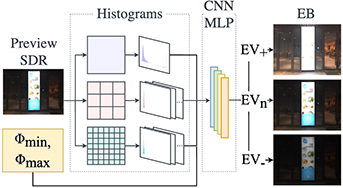
Real-world scenes typically have a larger dynamic range than what a camera can capture. Temporally and spatially varying exposures have become widely used techniques to capture high dynamic range (HDR) images. One of the key questions is what the optimal set of exposure settings should be in order to achieve good image quality. In response to this question, this paper introduces a lightweight learning-based exposure strategy network. The proposed network is designed to optimize the exposure strategy for direct fusion of standard dynamic range (SDR) images without access to RAW-domain images. Unlike most of the direct fusion exposure strategies that primarily focus on tone optimization alone, the proposed method also incorporates the worst-case signal-to-noise ratio (SNR) in the loss function design. This ensures that the SNR remains consistently above an acceptable threshold while enabling visually pleasing tones in lower noise regions. This lightweight network achieves a significantly shorter inference time compared to other state-of-the-art methods. It is a more practical HDR enhancement technique for real-time and on-device applications. The code can be found at
Jieyu Li, Ruiwen Zhen, Robert Stevenson, Jinwei Gu, "Learning-based Noise-aware Lightweight Exposure Strategy for High Dynamic Range Imaging" in Journal of Imaging Science and Technology, 2025, pp 1 - 11, https://doi.org/10.2352/J.ImagingSci.Technol.2025.69.4.040510
 Find this author on Google Scholar
Find this author on Google Scholar Find this author on PubMed
Find this author on PubMed